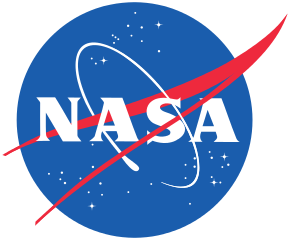There’s been some interesting policy commentary on the NASA budget going around today since the budget came out of committee. There’s a bit more going on here than just “Woo! NASA got funded for next year!”.
First, full disclosure: I’m a working scientist and my funding comes from NASA. Below is entirely my own opinion and musings about things.
There are a couple of great policy blogs that are covering this in a little more detail than I’m going to get into here. This is relatively important news because this is the budget that’s actually coming out of conference, which means that it’s significantly more “real” than the President’s Budget (i.e. the NASA budget request) or the marked up budgets coming out of the House and Senate.
Casey Dreier’s post over at The Planetary Society gives a good overview about what in the budget. The really interesting table is in the breakdown of the different NASA components. NASA really isn’t one monolithic beast, and the breakdown between the various components is shown in the breakdown table in Casey’s post (the budget breakdown is in a table/pdf form, so you’ll have to be a web ninja and open up two browser windows at the same time…I trust you). Broadly speaking, things are split between “Space Operations” ($5bn for flying into space now and upkeep for the International Space Station), “Exploration” ($4bn for developing new systems to fly into space), and “Science” ($5.5bn). The interesting thing in this budget is the continued funding of the Orion capsule (Exploration), and how the budget in the “Science” mission directorate is split up.
Things that fall under science are “Earth Science” (looking down), “Astrophysics”
(looking up), and Planetary Science (going to cool places). In the past few years, that last one has been cut in inflation-adjust dollars over the past decade. Check out this figure (also from the Planetary Society blog which I’ve reproduced below). It was last updated in February, so it doesn’t have the new investment indicated). The actual number is back up to roughly $1.6bn, which the planetary sciences hasn’t had since before The Recession. So, great news for Planetary Sciences.

The rest of the Science directorate broke down mostly as expected from the NASA request, modulo a few $million here or there. Astrophysics
looks like a small slice of the Science pie at only ~$700m, but if you include JWST as its own line item then the astrophysics spending is roughly comparable to Earth and Planetary Sciences.
You can find a bit more about the process from Heather Bloemhard’s post over at the AAS Policy Blog. Her post also includes some budget numbers for ground-based astronomy from the National Science Foundation (NSF) and the Department of Energy (DoE).
For those who are interested in the historical spending limits, here’s the NASA budget as a fraction of the federal budget since 1958 (thanks Wikipedia and Pics About Space!). This is a great resource for people who thought that at some point we spent a huge fraction of the national budget on NASA. Even at the peak (during the Apollo years), the NASA budget was less than 5% of the total Federal budget. Now we’re down below 0.5% of the budget. I’d love to get my hands on the budget breakdown as a function of time and see how much of this budget went to what we’d now think of as “Exploration” compared to “Science” as a function of time. Maybe for a future post..


Leave a Reply